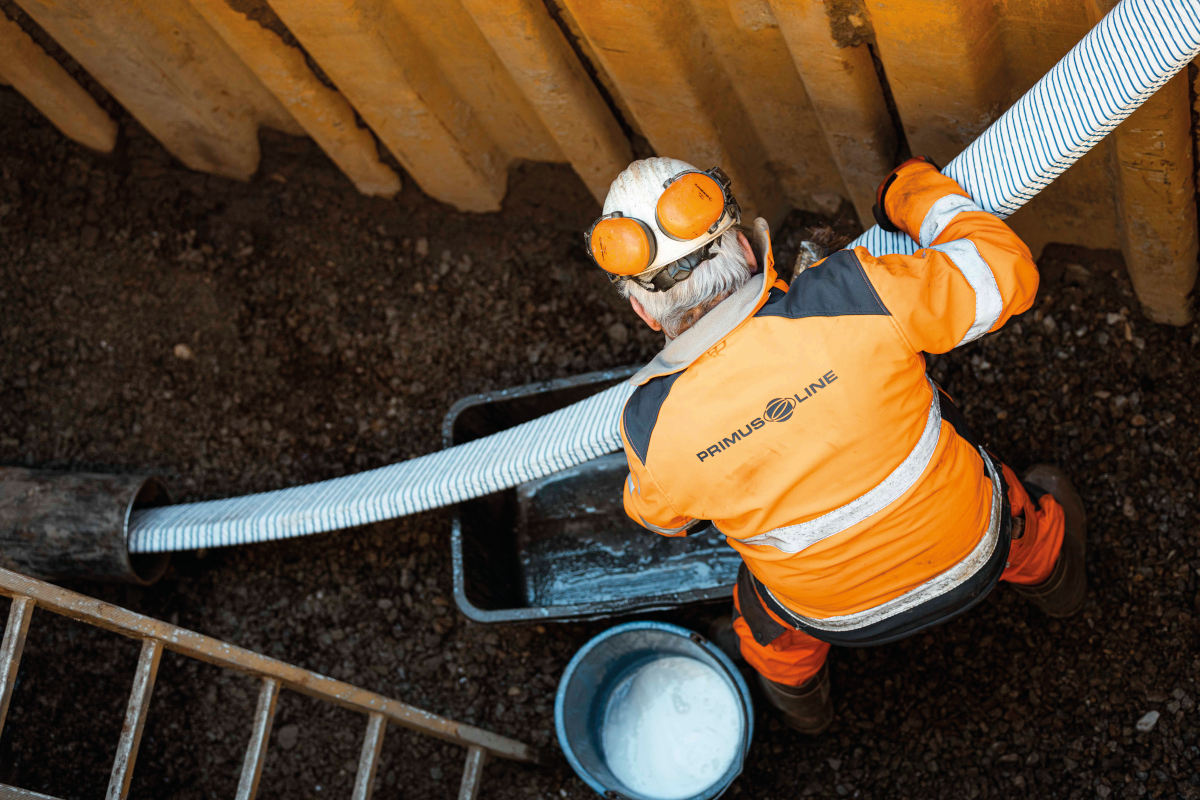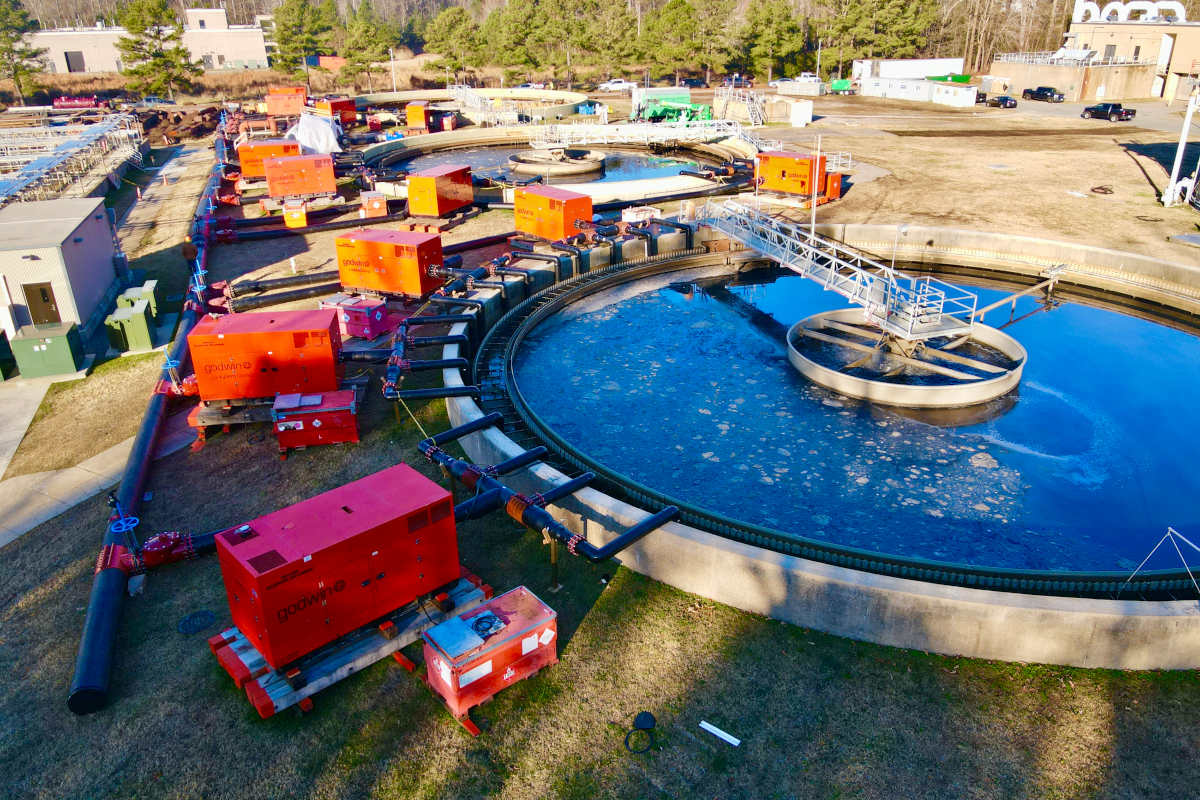
Queen’s University Studying QA, QC and Liner Design
Liner properties, such as elastic flexural modulus, flexural strength, long-term property retention factors, section thickness and section geometry are governing parameters in the design of common close-fitting liner design guidelines.
Generally, the design of liners focuses around choosing a sufficient liner thickness for a given manufacturer’s product, with their own respective material properties, to withstand various loading conditions over the service life of the installation.
Material properties such as flexural modulus, flexural strength and long-term performance factors are obtained from the manufacturers based on material testing conducted in house or by independent third-party testing laboratories. To make confident predictions of the structure’s load resistance and factor of safety, designers need to be certain that the material’s short- and long-term elastic moduli, flexural strength and section properties are satisfactorily accurate after installation.

Short-Term Flexural Properties
Three-point flexural tests measure the force required to bend a beam under three-point loading conditions (ASTM D790, ISO 178). Following ASTM F1216, flexural modulus and flexural strength of the liner material are determined by procedures detailed by ASTM D790 – Test Methods for Flexural Properties of Unreinforced and Reinforced Plastics and Electrical Insulating Materials.
RELATED: Grout Selection & the Design and Performance of Slip-Liners
Further, comparable guidance for the determination of flexural properties is provided in ISO 178 Plastics – Determination of flexural properties. Procedures between the two standards are similar when working with flat isotropic specimens. Un-reinforced materials with near isotropic properties can be machined flat from curved samples, coming from either the hoop or longitudinal direction, to produce rectangular material test specimens.
Since ASTM D790 restricts tests to be performed on flat specimens, reinforced material specimens are not prepared from a flat sample, as is common in-situ practice, then ASTM D790 cannot be used as milling the material flat destroys the reinforcement layers of the sample. In reinforced liners, the hoop and longitudinal direction have different amounts of fibers in each orientation resulting in the material being anisotropic.
Therefore, specimens prepared in the longitudinal direction would have different properties than specimens prepared from the hoop direction and cannot be used to fabricate a flat material specimen.
To address the issues of testing curved reinforced material samples, similar modifications to the two standards, ISO 178 and ASTM D790, have been developed and are presented in ISO 11296-4:2018 “Annex B” and ASTM F2019-20 respectively.
To convert the apparent elastic modulus values obtained by hoop direction testing of a curved pipe segment to equivalent flat or ring values theoretical expressions have been determined (Niemann 1998). This method is applicable for testing curved samples with nominal span (L) to mean diameter (Dm) curvature properties corresponding to a half circle test specimen (L/Dm < 0.7).
As summarized by Gumbel (2015), international experimental research has been undertaken to verify these relationships between circular, curved, and flat samples that are either unreinforced or have directional reinforcement (Romdal 1999; Starkey 2005; Dettman et al. 2011). Although ASTM F2019 imitates the ISO 11296-4 “Annex B” modifications to provide guidance on testing curved reinforced specimens, it follows an earlier (2009) edition of the current (2018) ISO standard, and some discrepancies between the two methods exist.

Long-Term Retention Factors
In North America, long-term properties at the desired service life are approximated by following the guidance of ASTM D2290-17 – Standard Test Methods for Tensile, Compressive, and Flexural Creep and Creep-Rupture of Plastics, which may be applied in different controlled variable conditions (i.e. temperature, humidity, hazardous material exposure).
RELATED: Maintenance Hole Research: Queen’s University Investigates Sprayed Polymer Liner Resistance
This guidance calls for coupon specimens to be subjected to constant load under controlled environmental conditions. For flexural properties, the mid-span deflection as a function of time or time-to-rupture is recorded at increasing time intervals for a duration of 1,000 hours or longer. From the test results, long-term flexural modulus and strength properties are obtained by extrapolating the experimental data using various curve fitting algorithms. Generally, CIPP liner design has often been conducted assuming 50-year long-term creep retention factors of 0.5 and 0.8 for unreinforced and reinforced liner materials (Doherty, I. et al. 2015).
In ISO 11296-4, procedures for determining long-term flexural stiffness (creep deformation) properties of CIPP under wet or dry conditions are outlined in its “Annex C.” Procedures using similarly prepared test specimens are detailed in a separate “Annex D” for determining long-term flexural strength (time-to-failure creep rupture tests) under wet or acidic conditions.
The specified duration of all these tests is 10,000 hours, and the results of the tests are expressed as a value of long-term flexural modulus or flexural strength extrapolated to 50 years. Recent experimental developments in testing for long-term properties are further discussed by Gumbel (2015).
Contrary to the common North American assumption, experimental work on un-reinforced liner materials, on structural CIPP pressure-pipe lining materials, shows that simplistic linear extrapolation of test data over 10,000 hours may over-estimate the long-term creep modulus and that the long-term modulus is an even lower proportion of the short-term modulus, i.e. <0.5, (Adebola 2019). With current creep retention factors and testing methods, an installation’s service life may be over-estimated and more investigation into the determination of creep retention factors is required for more accurate and confident extrapolation.
Wall Thickness Characterization
As a part of inspection practices, the thickness of liner installation needs to be verified using either non-destructive (i.e. ultrasonic testing, ASTM E797/E797M) or destructive measuring techniques ASTM D5813 and ASTM D3567. For smaller diameter installations (>15 in.) and larger diameter installations (>15 in.), a minimum of 8 or 16 evenly spaced measurements are respectively required around the circumference of the pipe at a distance from the end of the host pipe of 12 to 18 in. The thickness of the liner is then taken as average thickness and the minimum wall thickness of any measurement is not allowed to be less than 87.5 percent of the specified design thickness.
Robert Cichocki is a Ph.D. student and research and teaching assistant at Queen’s University.
References
Adebola, T., 2019. Service Performance of a Cured in Place Polymer Pipe Liner for Deteriorated Cast Iron Pressure Pipes.
ASTM F1216-16. Standard practice for rehabilitation of existing pipelines and conduits by the inversion and curing of a resin-impregnated tube.
ASTM F2019 – 20. Standard Practice for Rehabilitation of Existing Pipelines and Conduits by the Pulled in Place Installation of Glass Reinforced Plastic Cured-in-Place (GRP-CIPP) Using the UV-Light Curing Method.
ASTM D3567 – 17. Standard Practice for Determining Dimensions of “Fiberglass” (Glass Fiber Reinforced Thermosetting Resin) Pipe and Fittings.ASTM D5813 – 04. Standard Specification for Cured-In-Place Thermosetting Resin Sewer Piping Systems.
ASTM E797/E797M-15. Standard Practice for Measuring Thickness by Manual Ultrasonic Pulse-Echo Contact Method
Dettmann, S., Haacker, A. and Wagner, V. 2011 “Zwei Prüfunge – ein Elastizitätsmodul Geht das gut”. Bi Umweltbau 5|11.
Doherty, I., Downey, D., Macey, C., Rahaim, K., and Sarrami, K. 2017. NASTT’s Cured-In-Place Pipe (CIPP) Good Practices Guidelines.
Gumbel, J., Chrystie-Lowe, D., 2015. Determination of hoop strength and stiffness in short- and long-term testing of pipes and liners. No dig berlin.
Falter, B. 2017a. Comparison of global liner design codes. In Underground Infrastructure of urban Areas 4 (pp. 33-43). CRC Press
ISO 11296-4:2018. Plastics piping systems for renovation of underground non-pressure drainage and sewerage networks – Part 4: Lining with cured-in-place pipes (ISO 11296 4:2009, corrected version 2010-06-01). English translation of DIN EN ISO 11296-4:2011-07.
Niemann, H. 1998. “3-Punkt-Biegeversuch”. Unpublished contribution to German industry working group on Specification and Quality Assurance of Sewer Renovation Liners, April.
Romdal, P., 1999. “Comparison of bending properties from curved and flat samples”. DTI test report contributed to the CEN CIPP Task Group CEN/TC155/WG17/TG16 for standardization purposes, Danish Technological Institute, Taastrup
Starkey, P.R. 2005. “Comparison and Analysis of Data from 3-Point Bend Tests and Correlation with Ring Stiffness Data,” Final year undergraduate project, Manchester Metropolitan University, June 2005.
Waniek, R. W., Homann, D., and Grunewald, B. 2015. Slight disappointment on wall thickness (IKT LinerReport 2015; p. 8). Institute for Underground Infrastructure.




